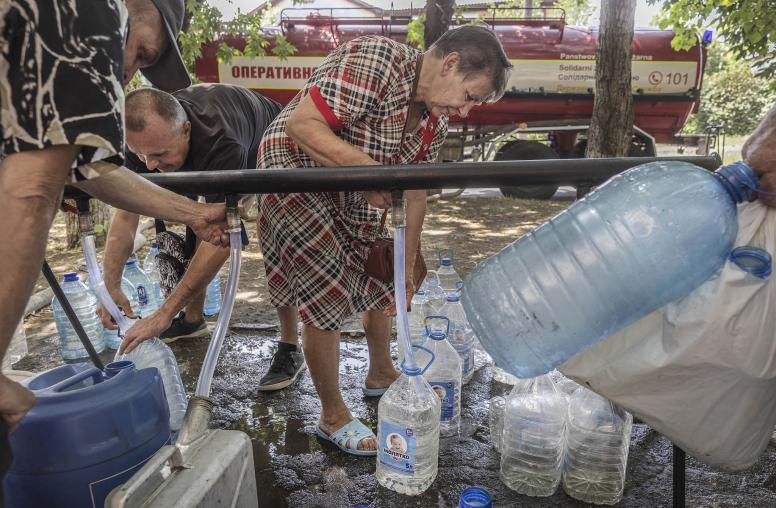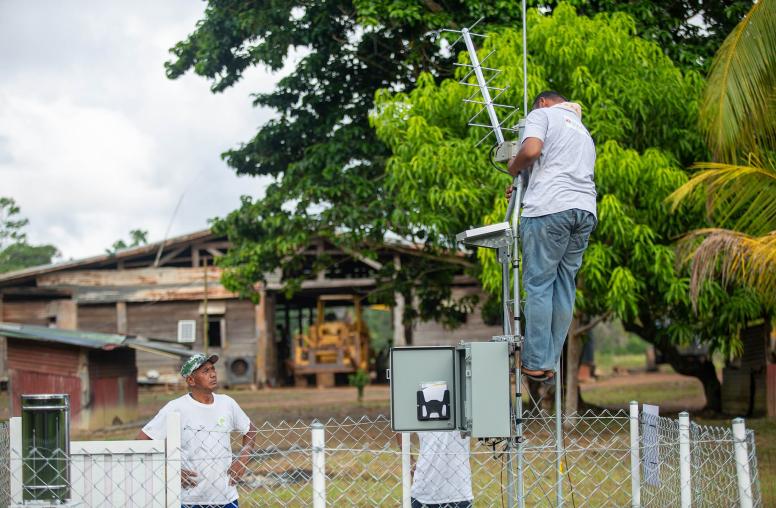Food Security and Peacebuilding in Conflict-Affected Regions
As President Barack Obama outlines how the U.S. will address current and future security threats in his National Security Strategy, USIP’s Raymond Gilpin discusses why hunger is relevant to our concerns, and why providing humanitarian aid is not necessarily the best solution.
Why is hunger an important security issue?
Most of the 1 billion people currently facing food insecurity live in countries affected by conflict. The most severely affected countries in 2009 Global Hunger Index include the Democratic Republic of the Congo, Sierra Leone and East Timor. Over 100 million joined the ranks of the world’s desperately hungry between 2008 and 2009. Growing global hunger can be conflict-inducing in three main ways. First, it deepens poverty and heightens disaffection in communities.
Such disaffection could be exploited by extremist groups. Second, growing hunger increases inter-group inequalities – another important conflict trigger. In some cases this leads to displacement and cross-border migration. Third, acute hunger creates humanitarian crises which could become violent. The violent responses to food shortages (caused by food price spikes in 2008) illustrate this point. This is why I believe conflict-sensitive approaches are necessary.
Why are conflict-affected regions particularly vulnerable?
Violent conflict makes communities particularly vulnerable to acute hunger in a number of ways. Food insecurity is not always an issue of availability. Accessibility is an important factor. The destruction of infrastructure and institutions in conflict-affected countries limits accessibility and constrains distribution networks. Vulnerable and marginalized groups suffer the most. Famine in the Horn of Africa provides an example. Also, asset depletion is worsened by conflict and impacts affordability. Populations in conflict-affected states possess relatively fewer assets with which to generate income or raise credit. Affordability factors greatly in food insecurity. The immediate post-conflict months in the Balkans could be cited in this regard. It is important to note that an entrenched conflict economy skews production and trade incentives and increases transaction costs. In this context liberalization efforts could have perverse consequences. In many cases, this is worsened by the politicization of food by those exercising a monopoly of force or political influence in these areas.
What should governments in conflict-affected states be doing?
Domestic food security policies could focus on easing trade restrictions and burdensome regulations. Tariff reductions could reduce the cost of importing goods and freer trade could encourage welfare-enhancing competition. However, conflict-affected states would also require compensating mechanisms to address potential fiscal losses and safety nets to cushion adverse effects of liberalization. Governments must also front-load assistance for agricultural development (inputs, technology and infrastructure) in order to enhance prospects for longer-term sustainability. Such action could be complemented with pricing, credit and marketing reforms that provide production incentives for farmers. Finally, the thorny issue of land ownership should receive significant attention, with a particular emphasis on the needs of displaced populations. This reform agenda should aim to wean communities off food aid by boosting domestic production and securing incomes.
What role could the international community play?
The knee-jerk reaction to food insecurity has been the provision of humanitarian food aid. This has not addressed the problem effectively or sustainably.
In some regions, this approach has had the unintended consequence of causing a switch in consumer preferences from locally-grown food to relatively-cheaper imported varieties. Domestic production has suffered as a result. The international community requires a more comprehensive, long-term approach. The recently-announced Global Agriculture and Food Security Program ($880 million pledged over three years; $475 million from US) is a right step in this direction. This program is a mechanism to pool funds that would support public and private initiatives to support national and regional strategies for food security in poor countries. Channeling multiple sources of donor financing through a common mechanism can reduce fragmentation and recipient country transaction costs of aid, and improve alignment around country programs. Main areas of focus include enhancing agricultural productivity, linking farmers to market, reducing farmers’ vulnerability to weather extremes and improving income-generating opportunities in rural areas. By making funding flows more predictable and improving agricultural productivity, the program will help people on food-stressed situations afford and access the food they need.
What else could international partners do?
In addition to this program, strategies should be considered to reduce the cost of emergency food aid. Three proposals could be suggested. The first is the creation of regional stockpiles, resources and logistics that would facilitate access to food aid at reasonable prices. Currently, most food aid has to be shipped half way across the world to its eventual destination. Second, financing mechanisms at key institutions should be revised to permit multi-year funding arrangements and the purchase of food on futures markets, rather than much costlier spot market purchases. The World Food Program currently buys the overwhelming majority of its food aid from spot markets. Third, food aid should be untied to allow the purchase of the most competitively-priced commodities.
Is lasting change feasible in an environment of scarce resources and competing human security challenges?
Changes are required is we are to make a significant dent in the enduring problem of world hunger. Addressing food security is costly. According to the International Food Policy research Institute, sub-Saharan Africa could require some $40 billion annually to reform its agricultural sector. Competing demands for scarce foreign assistance dollars means that food deficit countries will have to learn to do more with less. Assistance should address immediate needs but also emphasize technological, capacity and regulatory changes that could guarantee sustained progress. Countries should also transform the role of the state from an active participant in the market (and, in many cases, an extractor of economic rents) to an enabling factor that facilitates progress and equity. We need to learn a lot more about conflict dynamics and food security. Resources could be devoted to gathering and analyzing information on conflict specificities and food security mapping. Ensuring food security, particularly in conflict-affected countries, is a long-term endeavor that requires adequate resources, a comprehensive strategy and a lot of patience.



